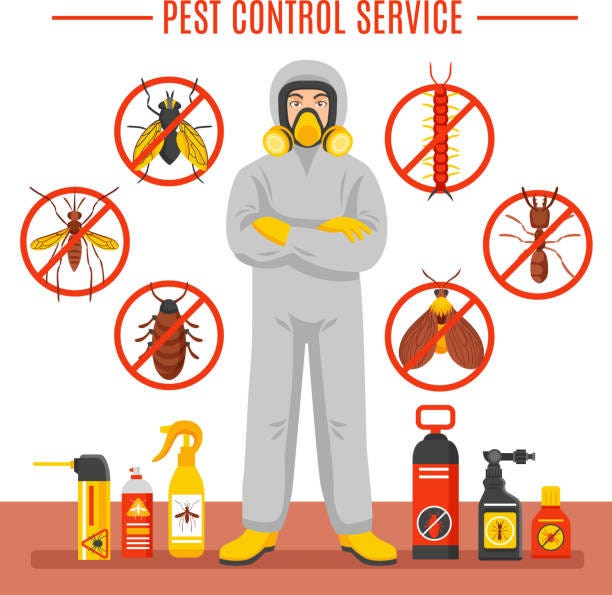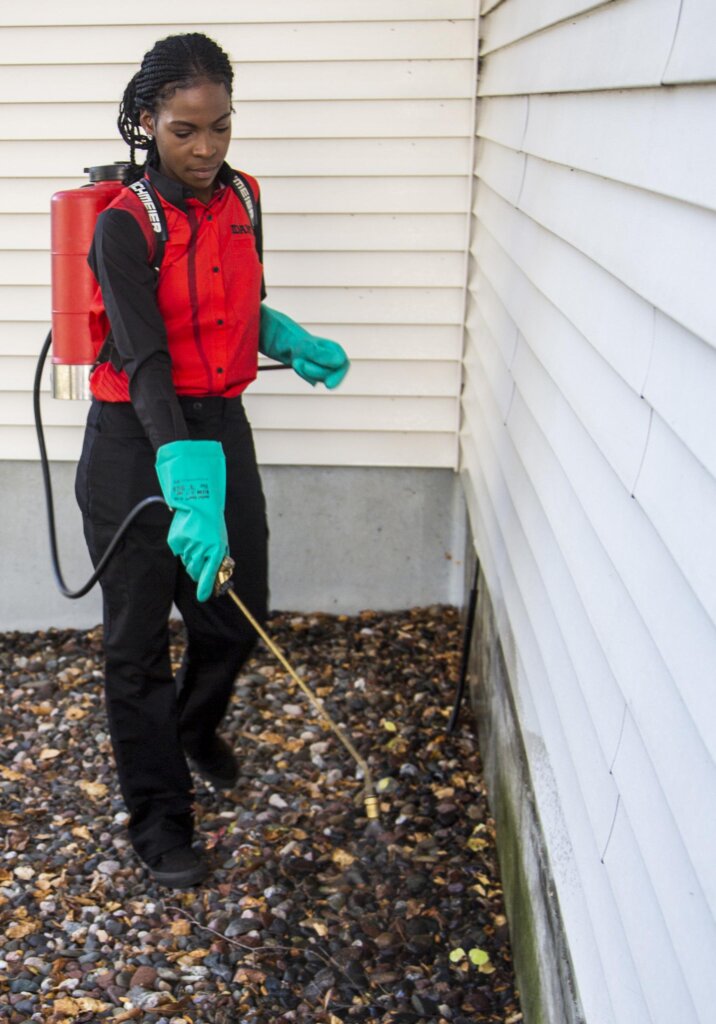Expert A1 Charlotte Bed Bug Exterminator - High Quality Service Assured
Expert A1 Charlotte Bed Bug Exterminator - High Quality Service Assured
Blog Article
Bed Bug Treatment Failure: Contrasting Chemical Vs. Non-Chemical Solutions
In the world of pest control, especially when handling the consistent concern of bed bugs, the selection in between chemical and non-chemical therapy solutions can be a critical one. Both strategies offer distinct benefits and drawbacks, affecting factors such as effectiveness, security factors to consider, and general cost. By taking a look at the nuanced information of each approach, a more clear understanding of which course to go after in dealing with a bed bug invasion can be attained.
Effectiveness of Chemical Treatments
Chemical treatments for bed insect infestations have actually been commonly identified for their quick and potent efficiency in eliminating these insects. When taking into consideration the efficiency of chemical therapies, it is crucial to comprehend that they can supply a quick and detailed service to a bed pest issue. Professional pest control specialists often rely upon insecticides to target bed pests at different stages of their life process, including eggs, grownups, and nymphs. These chemicals normally function by interrupting the bed insects' nerves, causing paralysis and ultimate death.
Moreover, chemical treatments have the advantage of providing recurring impacts, indicating that they can proceed to eliminate bed pests even after the preliminary application. This recurring activity is especially beneficial in combating any type of potential re-infestations. Furthermore, the quick activity of chemical treatments can bring alleviation to people dealing with extreme bed bug problems, enabling them to regain control of their home rapidly.
Safety Worries With Chemical Solutions
One critical facet that calls for cautious factor to consider when making use of chemical options for bed bug therapy is making certain the security of passengers and the environment. Exposure to specific chemicals made use of in bed pest therapies can lead to respiratory system problems, skin irritation, or other unfavorable reactions, specifically in people with pre-existing problems or level of sensitivities.
In addition, the environmental impact of chemical solutions is an additional significant factor to consider. Some pesticides utilized in bed insect treatments might be harmful to advantageous insects, wild animals, and communities if they seep into the soil or water supply. It is crucial to utilize chemical treatments carefully, following safety and security guidelines, and taking into consideration much less hazardous alternatives to mitigate these risks and guarantee the safe and reliable monitoring of bed bug infestations.
Advantages of Non-Chemical Strategies
Taking into consideration the possible safety and security issues and environmental effect connected with chemical solutions for bed pest therapy, exploring non-chemical strategies provides an appealing choice with a number of distinctive advantages. Non-chemical treatments are ecologically pleasant, as they do not contribute to air or water contamination, making them a lasting selection for insect control.
Additionally, non-chemical solutions can be efficient in targeting bed insects, consisting of Read More Here hard-to-reach locations where chemical therapies may not penetrate. Techniques such as warmth treatment, vacuuming, heavy steam cleaning, and bed mattress encasements offer thorough removal without making use of harmful chemicals. Additionally, non-chemical approaches can be much less turbulent, requiring minimal preparation and permitting quicker reentry right into treated locations. Generally, going with non-chemical bed pest treatment methods not just focuses on safety and environmental security yet additionally guarantees effective and detailed pest control.
Limitations of Non-Chemical Treatments

Furthermore, non-chemical treatments commonly call for several applications to accomplish effective elimination. This can be taxing and might not constantly ensure full elimination of all bed insects and their eggs, specifically in hidden or hard-to-reach places.
Moreover, the success of non-chemical therapies heavily relies upon proper execution and thoroughness, which can be challenging for individuals without professional competence. Insufficient application of non-chemical techniques may lead to incomplete eradication, causing relentless invasions and the need for additional treatments.
Consequently, while non-chemical therapies have their advantages, it is vital to acknowledge these restrictions and consider them when determining the most effective approach for taking care of bed insect problems.
Cost Comparison: Chemical Vs. Non-Chemical Options
Provided the limitations connected with non-chemical therapies, an important facet to evaluate in the context of bed find out here now pest management is the price contrast between chemical and non-chemical choices. Chemical treatments typically involve the application of pesticides by specialists, which can vary from $250 to $900 per area, relying on the seriousness of the infestation and the dimension of the location to be treated. On the other hand, non-chemical therapies like heat therapy or vapor can be much more costly, Read More Here with prices ranging from $1,000 to $6,000 for an entire home. While the first price of chemical therapies might seem lower, multiple treatments might be called for to fully eliminate the invasion, potentially boosting the overall price. On the various other hand, non-chemical options may provide an extra green and sustainable remedy, although they can be cost-prohibitive for some individuals. Inevitably, when thinking about the price of bed insect therapy choices, it is essential to weigh the ahead of time expenses versus the efficiency and long-lasting sustainability of the selected technique.
Final Thought

Taking into consideration the prospective safety and security issues and ecological influence connected with chemical solutions for bed insect therapy, checking out non-chemical methods offers an encouraging alternative with a number of unique benefits.Given the constraints associated with non-chemical treatments, a crucial element to evaluate in the context of bed bug management is the expense contrast between chemical and non-chemical options. In contrast, non-chemical therapies like warm therapy or steam can be more pricey, with prices varying from $1,000 to $6,000 for an entire home. While the initial price of chemical treatments might seem lower, numerous treatments might be needed to fully eradicate the invasion, potentially raising the total cost.In verdict, when comparing chemical and non-chemical bed pest treatment choices, it is necessary to consider performance, safety, benefits, constraints, and cost.
Report this page